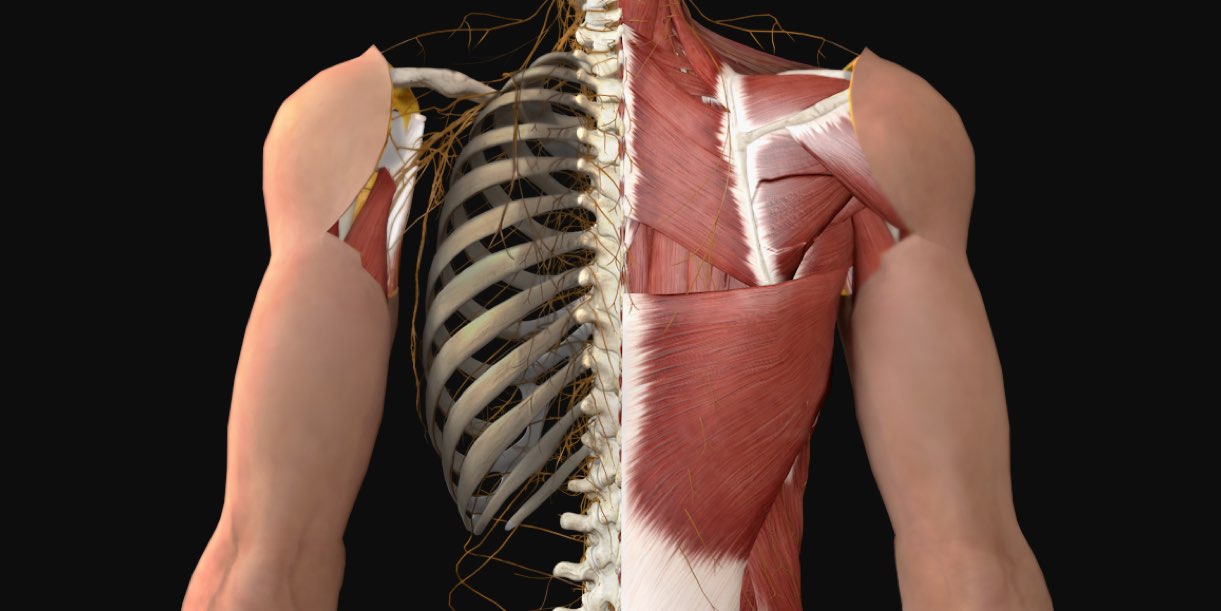
The human back is the large posterior area of the human body, rising from the top of the buttocks, to the back of the neck and shoulders.
The back is comprised of a large and complex group of muscles that work together to support the spine. This group of muscles help hold the body upright, allowing the trunk of the body to move, turn and bend in multiple directions.
The back muscles are anatomically layered into superficial (extrinsic) and deep (intrinsic) muscles.
The back comprises interconnecting nerves, bones, muscles, ligaments, and tendons, all of which can be a source of pain. Back pain is the second most common type of pain in adults (the most common being headaches). By far the most common cause of back pain is muscle strain.
Exercising the back helps reduce muscle stiffness and strain by keeping the connective fibers of ligaments and tendons flexible. Improved mobility through back exercise helps to prevent the connective fibers from tearing under stress, which in turn prevents injury and back pain.
Stretching is good for the back. For instance, stretching the hamstring muscles helps to relieve stress on the lower back. Another benefit of exercising the back is that the motion helps lubricate the facet joints in the spine, which are synovial joints that require appropriate motion.
Good posture is an important factor as it reduces the strain placed on the muscles and ligaments of the back.
Here are a few tips for a good sitting posture
- Distribute your body weight evenly on both hips.
- Keep your feet flat on the floor.
- Try to avoid sitting in the same position for more than 30 minutes.
- At work, adjust your chair height and workstation so you can sit up close to your work.
- Rest your elbows and arms on your chair or desk, keeping your shoulders relaxed.
So don’t turn your back on this important muscle group!
Learn anatomy regionally or systemically with our undergraduate anatomy Courses, as part of the Student Plus license. Unlock all Student Plus features, including Courses, with a FREE 3-day trial.
